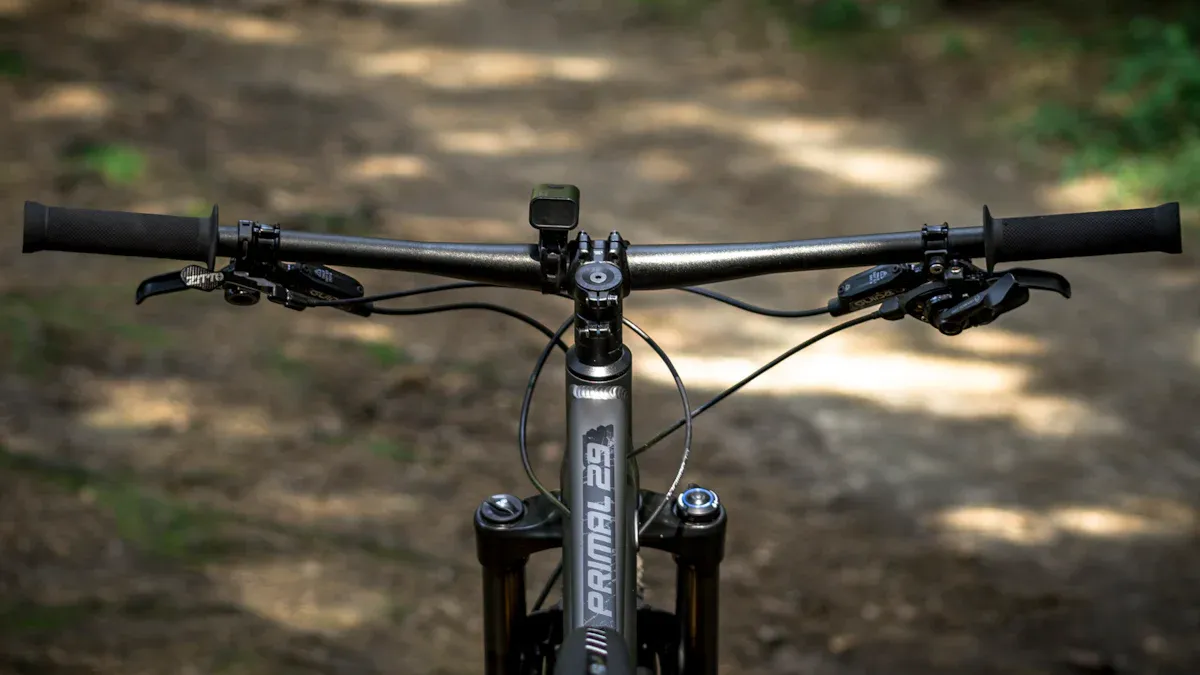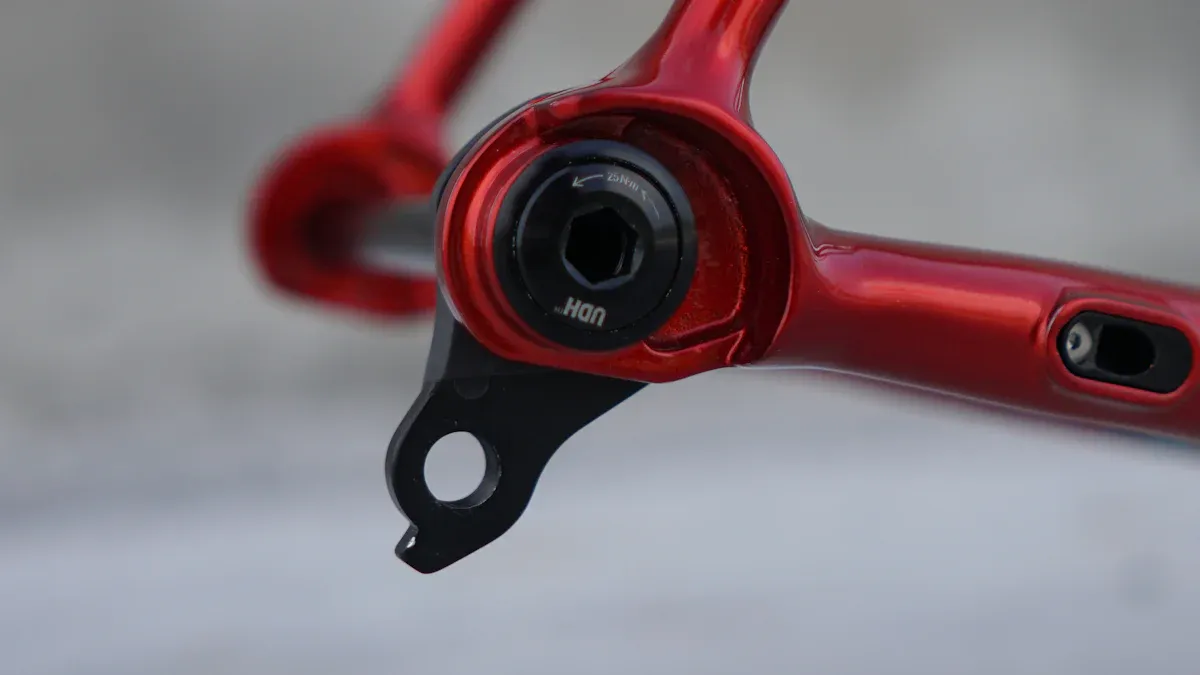
Have you ever thought about how your mountain bike frame weight affects your ride? Picking the right frame weight can really help your performance and comfort on the trail. A lighter frame usually makes you faster and more agile, but you need to find a good balance. Things like material, terrain, and your riding style matter in this choice. For example, studies say that a lighter frame can help performance, but it still needs to be strong enough for support. So, let’s explore what frame weight means for you!
Key Takeaways
A lighter mountain bike frame helps you climb better and go faster. This is great for riders who care about performance.
Comfort is important. A lightweight frame makes long rides less tiring. This lets you enjoy biking more.
Pick the right material for your frame. Carbon fiber is the lightest choice. Aluminum is strong and cheaper.
Think about how you ride and where you go. Casual riders might want comfort. Aggressive riders need a stronger frame for stability.
Finding the right mix of weight, performance, and comfort makes your biking experience better.
Why Frame Weight Matters

When you ride on trails, the weight of your mountain bike frame is very important. A lighter frame can really improve how you ride, especially when speeding up and going uphill. Here’s how frame weight affects your ride:
Performance and Handling
A lighter mountain bike frame helps you speed up and climb better. Here are some important points to think about:
Climbing Efficiency: Weight changes how easily you climb hills. Other things like tire choice and suspension matter too, but a lighter bike can help a little. Studies show that a lighter frame can make you go about 0.2% to 1% faster, depending on how steep the hill is.
Effort and Energy: How well your bike works affects how hard you have to try. If your frame is lighter, you’ll use less energy while climbing. This can really help during long rides. This is especially true for endurance cyclists who burn around 6,000 kcal each day. In races like the Tour de France, being able to resist tiredness is more important than just power, showing why lightweight frames are needed.
Comfort Considerations
Frame weight also changes how comfortable you feel on the bike. A heavier frame might feel strong, but it can make you tired over time. Here’s what to remember:
Fatigue Resistance: Pro riders say that a lightweight frame helps you feel less tired on long rides. When you’re not carrying extra weight, you can keep your energy longer. This is very important for tough climbs or long trail rides.
Handling and Stability: A lighter frame can make your bike easier to handle, making it feel more responsive. You’ll find it simpler to turn and navigate tricky spots. But, balance is important. If the frame is too light, it might not be stable, especially on bumpy trails.
Materials and Mountain Bike Frame Weight

The material you pick for your mountain bike frame is very important. It affects both the weight and how well your bike performs. Let’s look at the most common frame materials: carbon fiber, aluminum, steel, and titanium. Each one has special features that can change your biking experience.
Carbon Fiber vs. Aluminum
Carbon fiber frames are a favorite for serious mountain bikers. They usually weigh between 600 and 1400 grams. This makes them one of the lightest choices. Being light gives you a big boost in performance. For example, carbon fiber frames are about 40% lighter than aluminum frames. Aluminum frames usually weigh between 1200 and 1600 grams. This weight difference helps with handling, speed, and efficiency on trails.
Material | Average Weight (g) |
|---|---|
Carbon Fiber | 600-1400 |
Aluminum | 1200-1600 |
But don’t forget about aluminum. It is strong and can resist impacts well. While it might be heavier, it is often cheaper and can handle rough use. Both materials have good and bad sides, so think about what you care about more: weight or strength?
Material | Density (g/cm³) | Weight Advantage | Performance Benefits |
|---|---|---|---|
Carbon Fiber | ~1.6 | Better handling, speed, and efficiency | |
Aluminum | ~2.7 | N/A | Stronger against impacts, more affordable |
Steel and Titanium Options
Steel frames are heavier, weighing around 1200 to 2400 grams. However, they provide great comfort. They absorb shocks and bumps well, making them perfect for long rides on rough paths. If you want a smooth ride, steel could be a good choice.
Titanium frames mix the best features of both materials. They are lighter than steel but heavier than carbon fiber. This gives a nice balance of strength and comfort. Titanium also resists rust, so your bike can last longer if you take care of it. Here are some important facts about steel and titanium:
Steel frames are comfy and absorb shocks well, making them great for long trips.
Titanium frames are stiff but also reduce vibrations, giving a smooth ride.
Titanium is strong for its weight, helping it last longer, but it needs careful welding.
For weight, a typical steel frame can weigh around 3000 to 3200 grams. A very light steel frame can be about 2724 grams. For titanium, the weight can change, but it usually falls between the two.
Choosing the Right Size Bike
When you choose a mountain bike, picking the right size is very important. The size of the frame affects how well the bike fits you. This fit impacts your comfort and how well you perform. Let’s look at how frame geometry matters.
Frame Geometry
Frame geometry means the angles and lengths of different bike parts. This geometry affects how you sit on the bike and how your weight is spread out. For example, a steeper seat tube angle keeps your weight centered over the bike. This design helps a lot when going up steep trails. It reduces vertical movement when the suspension compresses, making you more comfortable and in control.
Here’s a quick look at how bike geometry affects handling:
Aspect | Influence on Handling Characteristics |
|---|---|
Headtube Angle | Smaller angles give stability at high speeds; larger angles allow tighter steering for climbing. |
Fork Offset | Changes trail, which affects the steering torque needed for handling. |
Bottom Bracket Height | A higher height raises the center of gravity, affecting cornering; a lower height is better for stability. |
Wheelbase | Longer wheelbases make the bike more stable; shorter ones help with agility in tight turns. |
Stability vs. Nimbleness
Finding the right mix of stability and nimbleness is key. A larger frame feels stable, especially on fast descents. But it can be hard to handle on tight trails. A smaller frame is easier to maneuver, helping you get through tricky spots. However, it can feel jumpy at high speeds.
Also, remember that the weight difference between small, medium, and large mountain bike frames is small. The frame weight usually makes up about 18% of the total bike weight. A larger frame might weigh about 20% more, adding only around 3.6% to the total bike weight. So, while frame size is important, it’s not the only thing to think about for performance.
Terrain and Riding Style
When you think about mountain biking, the ground you ride on is very important. Different surfaces need different bike features. Here’s how the terrain affects your choice:
Terrain Considerations
Rocky Trails: If you ride on rocky trails a lot, you need a heavier frame. A strong frame can handle the bumps and give you stability. It helps absorb shocks and keeps you steady on rough spots.
Smooth Paths: If you like smooth paths, a lighter frame is better. It helps you go faster and makes riding easier. You’ll see how quickly you can speed up and keep going.
Different terrains really change what bike frame weight you should choose. For example, rocky trails need a stronger and heavier frame to deal with the stress and stay stable. Smooth paths let you use lighter frames that can help you go faster and ride better.
Personal Riding Style
Your riding style also changes what frame weight is best for you. Here’s how:
Casual Riders: If you like easy rides, comfort and stability matter. You might want a lightweight frame for easier control.
Cross-Country Riders: If you enjoy cross-country biking, a lightweight frame is important for speed and quick moves. Look for efficient gears and fast wheels to boost your performance.
Enduro Riders: If you ride on tough terrain, a stronger frame is a must. Heavier and tougher designs can handle the hard parts of aggressive riding.
Expert riders say to think about what you like to do and how much you want to spend. This helps you find the best frame for your style. Balancing weight, performance, and comfort is key for a fun ride.
Finding the right mountain bike frame weight is all about balance. You want a frame that enhances your performance without sacrificing comfort. Remember to consider:
The local trail conditions where you ride most often.
A lightweight frame might help you speed up, but if you ride on rocky trails, a sturdier frame could be better. Ultimately, think about what feels right for you. Choosing the right frame weight can make your rides more enjoyable and help you tackle any trail with confidence! 🚵♂️
FAQ
What is the ideal weight for a mountain bike frame?
The best weight depends on how you ride and where. Lighter frames usually help you go faster and be more agile. Heavier frames give you more stability and strength. Try to find a balance that works for you.
Does frame weight really affect performance?
Yes! A lighter frame can help you climb better and go faster. But, you should also think about comfort and stability, especially on bumpy trails. Pick a frame that matches your riding goals.
How do I know if a frame is too light?
If a frame feels too bendy or shaky while riding, it might be too light for you. Ride it on your favorite trails to check if it feels comfortable and performs well.
Are expensive frames worth the investment?
More expensive frames often use better materials and technology. This can improve how well they perform and last longer. But, think about your riding style and budget to see if the extra cost is worth it for you.
Can I change my frame later if I don’t like it?
Of course! You can always upgrade your frame later. Just make sure your new frame fits your riding style and what you like better. Remember, changing frames might also need new parts.
See Also
Key Factors to Evaluate When Selecting an E-Mountain Bike Frame
Guidelines for Picking the Perfect Carbon Mountain Bike Frame
Tips for Selecting the Ideal Bike Frame for You
